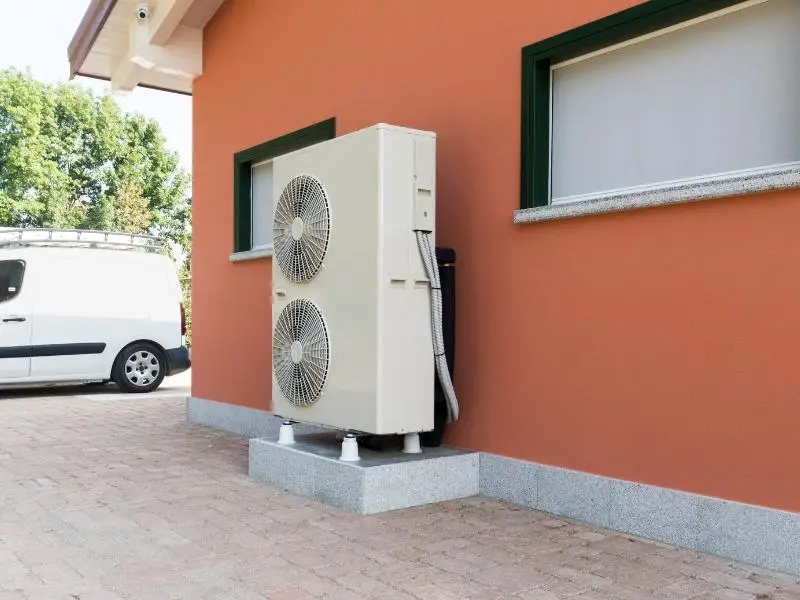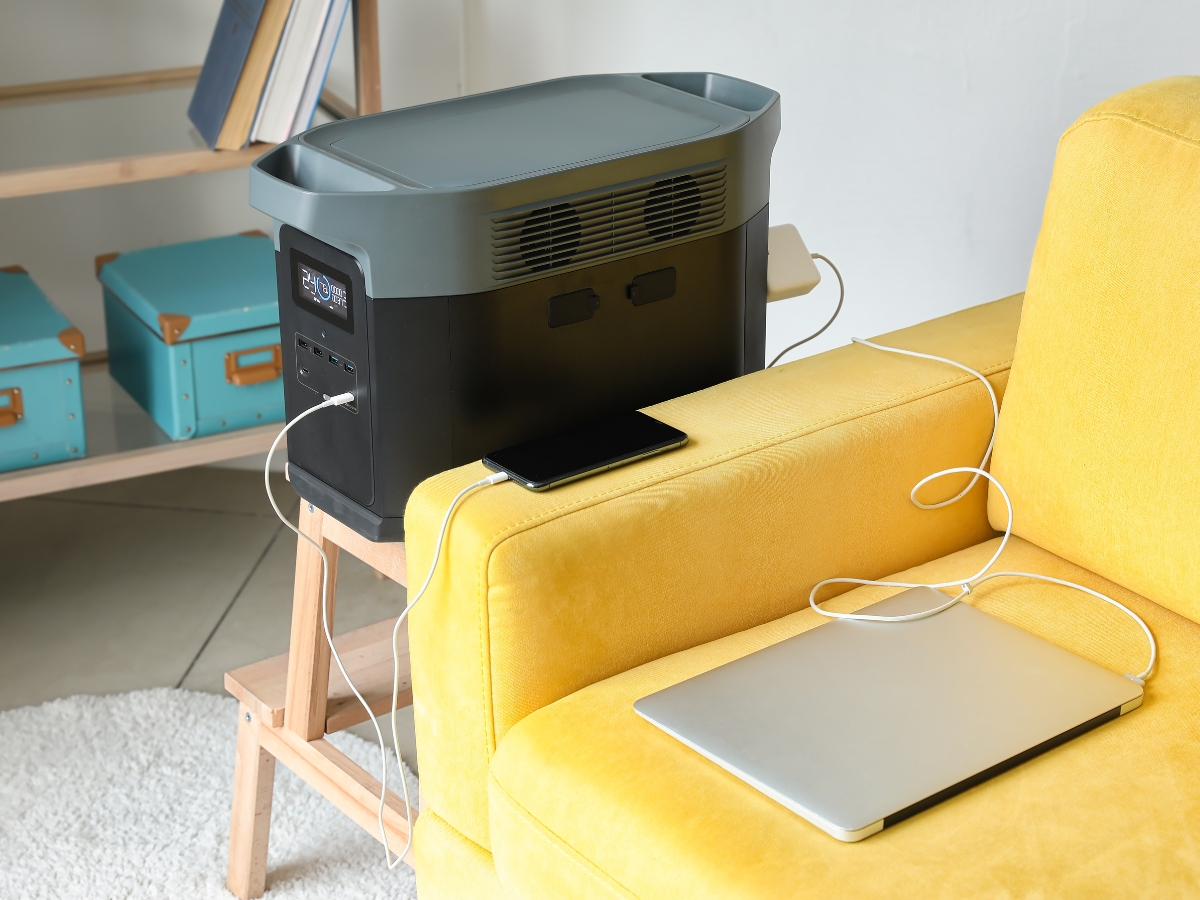If you have decided that the cost to keep your home cool or warm is becoming too much and you are looking at a heat pump to reduce those costs, then you are in the right place! You need to understand what size heat pump you would need to achieve this.
The rule of thumb when it comes to sizing heat pumps is that you need 30 BTU (British Thermal Units) for every square foot of space in the home, but several other factors would be considered when sizing a heat pump for a home to ensure proper performance.
To deliver a good overview, we need to consider the following when looking at heat pump sizing:
- The eight considerations as determined by the Air Conditioning Contractors Of America
- The square footage VS Heat pump size chart
- Types of heat pumps
- Cost Vs. features on a heat pump
As with anything to do with energy efficiency, it has to be precise to be effective, so let’s explore these a little more to understand what size heat pump you need.

What Is Manual J For Determining Heat Pump Size?
The Airconditioning Contractors of America created Manual J, which is the industry standard for assessing the heat pump requirements. It considers eight specific factors, and we will look at those in more detail below.
1. Why Does The Local Climate Affect The Heat Pump Size?
When looking at any system that provides heating or cooling, the climate has a considerable influence on the specifications of that system as the seasonal temperatures will affect the proficiency of that system.
Colder climates will require a larger heat pump than warmer ones, so someone in Chicago would require a bigger heat pump than someone living in Miami. The overall average temperatures will be considered carefully when considering heat pump size.
2. How The Size And Shape Of The Home Matters When Sizing A Heat Pump
As a rule, the larger the house, the bigger the heat pump. Also, the shape of the house influences the airflow through the home, so a home that has more turns and bends than one that is laid out straight would need a larger heat pump to compensate for the design.
3. Why Insulation Matters When Sizing A Heat Pump
In a standard home, most of the heat and ‘coolth’ escapes through the ceiling and roof, and where there is poor insulation, the heat pump would need to be bigger to accommodate the loss.
Ideally, the insulation should be done first before putting in a heat pump, as this will reduce the upfront costs in terms of the heat pump size and reduce the load on the heat pump during operation.
Insulation refers to roof and ceiling and windows and any other spaces in the structure that can allow heat to move in and out of the uncontrolled space. It should meet the region’s insulation rating to be effective.
4. Why The Number Of Windows Affects Heat Pump Size
The second-biggest loss of energy in a home occurs through the windows, and the more you have and their location influences the size of the heat pump you will need.
Many of the older homes have windows designed to prevent energy loss and if you are going to invest in a heat pump, then upgrading your glass to meet better insulation levels is a good idea.
It will reduce operating costs and allow the house to maintain a consistent temperature throughout winter or summer. Double glazing and specially designed thermally efficient glass will go a long way to keeping your home comfortable and energy-efficient.
5. When Infiltration Of Air Would Affect Heat Pump Sizing
This aspect was briefly discussed under insulation, and it also plays an important role in determining the heat pump size. The more spaces there are where outside air can infiltrate and allow heat or coolth out; the less efficient the heat pump.
There are always natural thermodynamics in play when it comes to heating and cooling, and air naturally moves from high pressure (warm /dry) to low pressure (cool/moist), and if there are cracks in walls or doors, then there will be a constant loss of energy through these holes.
You or your HVAC contractor may need to find those spaces and seal them before choosing your heat pump size.
Remember that the better your home is insulated and sealed, the less energy you need, and you can pick a smaller heat pump that will save you both upfront costs and operational costs.
6. How Many People Live In The Home
Another key metric is the number of people that reside in the home. As humans, we emit heat, which influences the size of the heat pump needed as it adds heat into the space that would need to be removed.
More people in the home = more heat released and more rooms that would need cooling or heating. So a home with six people would need a bigger heat pump than a home with three residents.
7. How Those People Like The Home Environment
Suppose everyone in the home is happy having the space at a comfortable temperature through all seasons or needs different temperatures, possibly due to health concerns. In that case, this will influence the heat pump size.
Where there are fluctuations in temperature preferences, the heat pump would work harder to accommodate them than if the required temperature was in a more consistent range.
8. Why Other Heat Generating Appliances Influence Heat Pump Size
As with people in the space, most appliances emit heat during operation, and that heat load has to be considered when sizing a heat pump for your home. This element also factors where these appliances are located and whether they allow heat to escape directly into the house or be redirected without influence.
Fridges, TVs, freezers, coffee machines, and computers are just a few devices that emit heat during operation, so to ensure the right size heat pump is used, all of this has to be considered.
Now, all of this seems overwhelming, but the good news is that your HVAC installer will have a system and process to calculate all of this into the equation and get to the correctly sized heat pump.
Heat Pump Size Vs. Square Footage
The table below gives you a decent indication of how the heat pumps size changes as the square footage increases. You will see that the heat pump size correlates in tons as well, which is how HVAC engineers rate heat pumps.
Based on the home size and corresponding heat pump size, you can immediately get an indication of what size heat pump your home would require.
Of course, this is just a guide, and the other factors discussed above would need to be included before a final size selection is made.
| Home Size: | Heat Pump Size (In BTUs): | Heat Pump Size (In Tons): |
| 300 sq ft | 9,000 BTU | 0.75 tons |
| 500 sq ft | 15,000 BTU | 1.25 tons |
| 750 sq ft | 22,500 BTU | 1.88 tons |
| 1,000 sq ft | 30,000 BTU | 2.5 tons |
| 1,500 sq ft | 45,000 BTU | 3.75 tons |
| 2,000 sq ft | 60,000 BTU | 5.0 tons |
| 2,500 sq ft | 75,000 BTU | 6.25 tons |
| 3,000 sq ft | 90,000 BTU | 7.5 tons |
For example, let’s do a manual calculation based on the home size of 1800 sq feet and what size heat pump would be needed.
Remember that you need 30 BTU per square foot of space, so an 1800 sq foot home would require 1800 X 30 = 54 000 BTU, and this would fall between a 3.75 ton and 5-ton heat pump.
Now, here is where the climate conditions play a role. Suppose this house was in a hot climate like Texas, Florida, or California.
In that case, you could reduce the heat pump size by as much as 30%, whereas if this were in a much colder climate like Minnesota or Illinois, then you’d need to add around 40% to this calculation.
Another Way To Size Your Heat Pump
If this table seems a bit technical, you can also use another simple way to estimate what size heat pump you would need for your home.
You would need about 1 ton of air conditioning capacity for every 500 square feet of space. So using this for a home of 1800 square feet, you would need a 3,6-ton heat pump.
Again, this is only an indication and is in the same ballpark as the table above, but the heat pump’s final size would be properly calculated once all the considerations have been factored in.
What Types Of Heat Pumps Are There?
Heat pumps have various options, including air source heat pumps and ground source heat pumps. Heat pumps work by pumping heat from one place to another rather than creating heat using electricity or other fuels.
An air-source heat pump will use the outside air as its heat source, while a ground source heat pump uses the Earth’s thermal energy stored around 6-10 ft below the surface.
The heat pump moves cold air out and warm air in when heating, and the reverse for cooling.
Air source heat pumps also provide a hot water heating solution called air-water, and this would pump hot water through the house for bathing purposes, while an air-air system would be used just for cooling and heating in the home.
You also get hybrid systems that offer both water and air heating, and heat pumps can even be used to drive underfloor heating systems.
Why it’s Important To Choose The Right Size Heat Pump
Based on the table, you may think that you can simply use the one closest to your home’s square footage, but this may not be suitable as it can result in more problems than solutions.
If the selected heat pump is too small, it will work too hard and suffer from excess loading, resulting in breakdowns and a lot of money spent on repairs and eventually upgrades, which would cost more in the long term.
If the heat pump is too big, it will produce excess energy, cost more and waste resources. Considering the whole point of a heat pump is to reduce energy costs, then sizing it accurately is worth taking the time to do.
There are other side effects of having the incorrect size heat pump. One of those is inconsistent and uncomfortable temperatures and living conditions and drastic changes in humidity indoors, none of which are pleasant.
The point of the heat pump is to stabilize the internal environment so it is comfortable for everyone in the home, and having the right size heat pump will achieve that.
What Features Should You Consider On A Heat Pump?
While everyone wants to save costs on projects like this, you need to consider what you are investing in and the implications of opting for a better higher-quality system and some of the features to look at are :
- Energy Efficiency Ratings :
The SEER and HSPF ratings indicate the heat pump’s energy efficiency, and the higher those are, the more energy-efficient the unit is.
- The Type Of Blower :
Heat pumps have three options on the blower: fixed speed, single-speed, and variable speed. The speed options affect the efficiency of the heat pump and the comfortability it can provide.
Each blower option has its pros and cons, and it would be best to consult your HVAC engineer to determine which would be better suited to your application.
- The Compressor Type
The type of compressor is an important aspect to consider when looking at your home’s heat pump size and application.
The single-stage compressor only heats and cools at maximum to run at full power when operational, while the two-stage compressors have can operate at various levels.
Some Tips When Choosing An HVAC Installer
Googling an HVAC specialist in your area is a good start. They will be familiar with the weather conditions and home designs and have previous experience calculating the various factors required to provide the proper solution.
With an investment of this size, always do some due diligence on any supplier before you hand over any money or sign any contracts. You need to be sure that the contractor is reputable – so check if their name comes up with poor reviews and ask for references as well.
Finding the right size heat pump is a process, but it doesn’t have to be a struggle now that you know what to look for.
Resources



